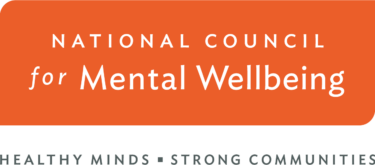This guide provides CBHOs with the tools and strategies needed to educate their communities on the utility of carrying naloxone to save the life of someone experiencing an overdose.
Read the GuideNaloxone Guide
Over-the-Counter Naloxone: A Life-Saving Tool for Everyone
The over-the-counter medication naloxone can be lifesaving during an opioid overdose. Knowing how to use it properly is crucial.
In less than two minutes, learn clear, step-by-step guidance to use naloxone effectively. You’ll learn the signs of an overdose, the essential steps to take in responding and how to administer naloxone nasal spray. You’ll also learn what to do once the person starts to recover.
What Is Naloxone?
Naloxone is a lifesaving medication that reverses an opioid overdose, restoring normal breathing by blocking the effects of opioids. Once available only by prescription, naloxone is now available over the counter (OTC) as a nasal spray under brand names such as Narcan and RiVive. This change made it easier for the general public to obtain and use this critical tool in emergency situations.
You Should Carry Naloxone
With the ongoing opioid crisis, carrying naloxone is essential. Opioid overdoses happen unexpectedly, and having naloxone on hand can save a life — whether it’s a friend, a family member or a stranger. Naloxone is a first aid tool, and just like CPR or an EpiPen, it should be part of every first aid kit at home, at work and in public spaces.
Good Samaritan laws in most states protect individuals who administer naloxone during an overdose from legal liability. However, it’s important to be aware of your state’s specific laws, as protections vary.
How to Recognize an Overdose
Know the signs of an opioid overdose:
- Shallow or stopped breathing
- Gurgling or snoring sounds
- Cold or clammy skin
- Blue fingertips or lips
- Nonresponsiveness to stimuli
If you notice these signs, administer naloxone immediately and call 911.
Using Naloxone
The naloxone nasal spray is easy to use and requires no medical training. To administer naloxone during an overdose, follow these steps:
- Sit the person up straight or lay them on their back. Tilt their head back to open their nasal passages. Make sure they are not slouching or hunched over, as this can obstruct their airway.
- To administer the naloxone, insert the tip of the nasal spray into the person’s nose and push the plunger all the way.
- Call 911 after administering naloxone, if you’re alone. If someone is with you, ask them to call while you administer the naloxone. Note: First responders may take a while to arrive.
- If the person is unresponsive after two to three minutes, you can administer another dose of naloxone. Multiple doses may be necessary, but be sure to wait two to three minutes before administering another dose.
- While waiting for the naloxone to take effect and for first responders to arrive, you can perform rescue breathing if you are comfortable doing so. Chest compressions are not needed, because an overdose does not cause the heart to stop beating. To perform rescue breathing:
- Keep the person’s head in the same tilted-back position by holding their chin up with one hand.
- With the other hand, pinch their nose shut. Then, breathe into their mouth, giving two rescue breaths. Give one breath lasting one second, take a regular deep breath for yourself, then deliver a second breath lasting one second.
- Make sure your mouth creates a seal against theirs, and that their chest rises with the breaths. If you do not see their chest move, adjust the tilt of their head and the seal around their mouth for the next set of breaths.
- Stay with the person until help arrives! The effects of naloxone can wear off, and the person may need additional medical attention.
To see these steps in action, watch the National Council for Mental Wellbeing’s Opioid Overdose Reversal video.
Naloxone Myths and Facts
Myth: Naloxone encourages drug use.
Fact: Naloxone does not promote drug use. It is a safety measure that saves lives during an overdose. In fact, access to naloxone has been shown to reduce drug use, as people become more aware of the risks associated with opioids.
Myth: People become violent after receiving naloxone.
Fact: Most people are disoriented but not violent after naloxone is administered. It’s important to calmly inform them that they were overdosing and that naloxone was used to help them.
Be an Upstander: Save Lives With Naloxone
By learning about naloxone and keeping it on hand, you become an “upstander” — someone prepared to step in and potentially save a life. Naloxone access and use is legal in all 50 states, and many states have Good Samaritan laws that protect people who respond to overdoses.
Remember: Naloxone can’t be used to get high and isn’t harmful to someone who isn’t experiencing an opioid overdose. When in doubt, it’s always better to administer naloxone.
Other Places to Get Naloxone
Is the cost of OTC naloxone a barrier for you? It’s available free or low-cost through various community resources, including local health departments, secondary prevention organizations and some libraries.
Carrying naloxone is a simple yet powerful action everyone can take to combat the opioid crisis. By having naloxone on hand and knowing how to use it, you could save a life.
